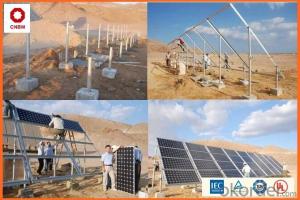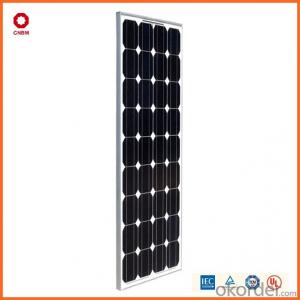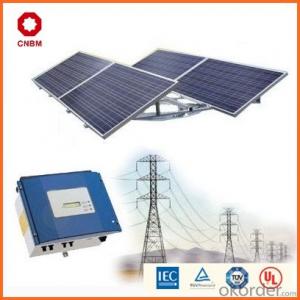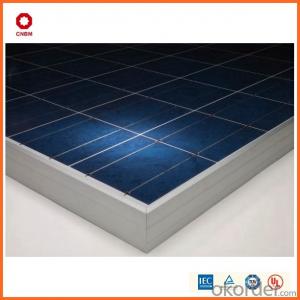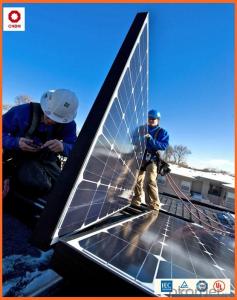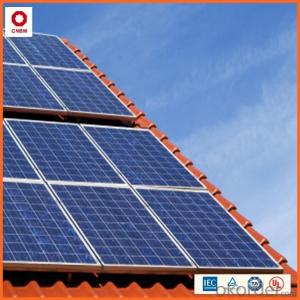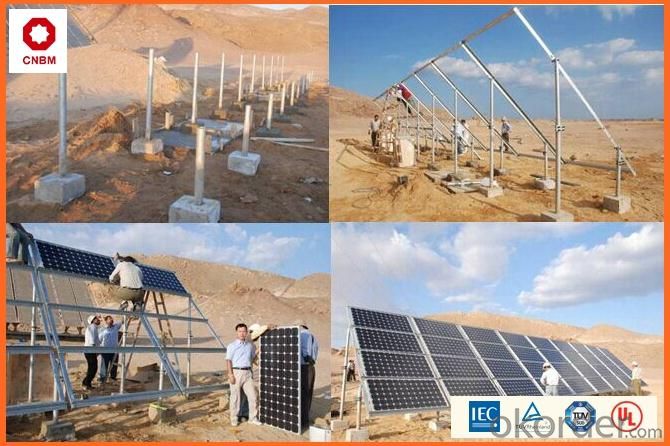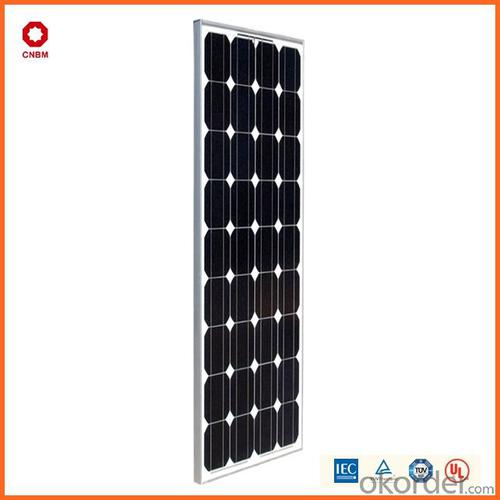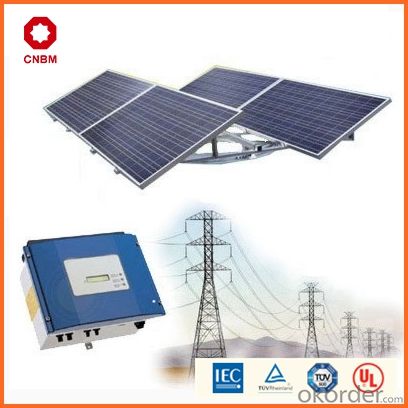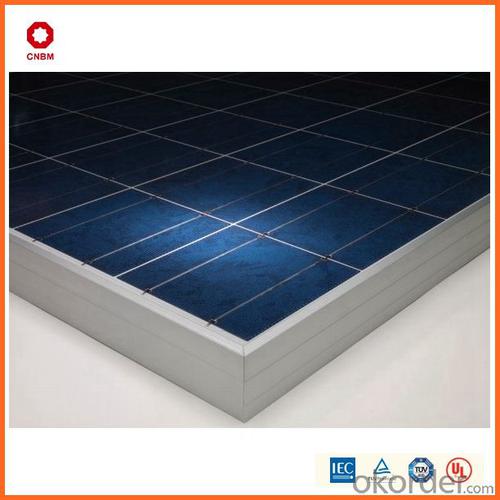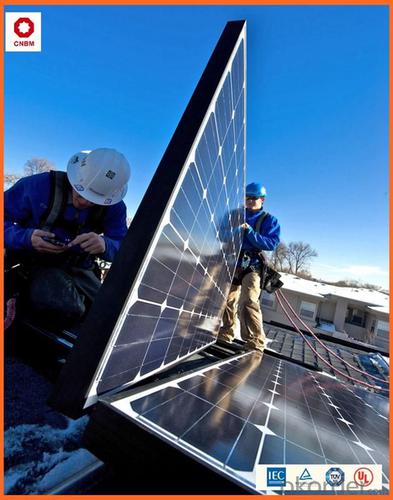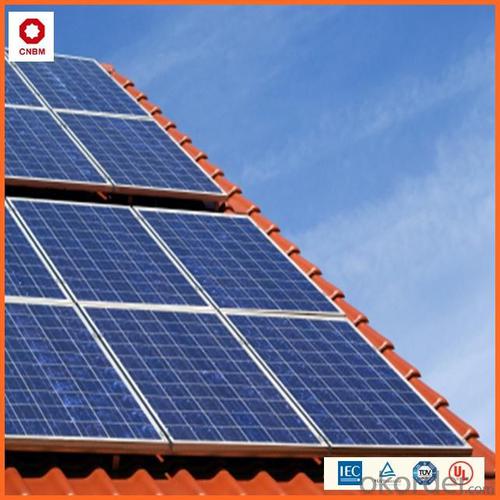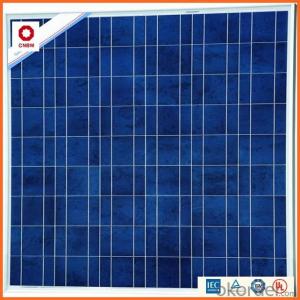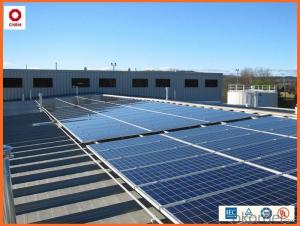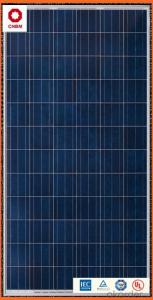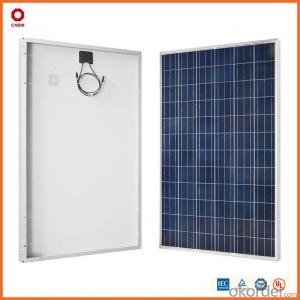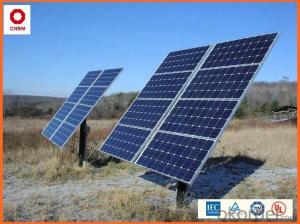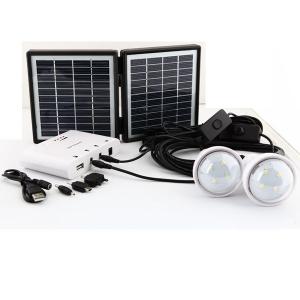Solar Energy Systems Llc 85w Small Solar Panels In Stock China Manufacturer
- Loading Port:
- China main port
- Payment Terms:
- TT OR LC
- Min Order Qty:
- 1 watt
- Supply Capability:
- 10000000 watt/month
OKorder Service Pledge
OKorder Financial Service
You Might Also Like
Specification
Product Description:
Hot Sale !!! Quality and Safety of Small Poly Solar Panel 5w~150w
1. Rigorous quality control meets the highest international standards.
2. High-transmissivity low-iron tempered glass, strong aluminium frame.
3. Using UV-resistant silicon.
4. IS09001/14001/CE/TUV/UL
Warranties of Small Poly Solar Panel 35~85w
1. 10 years limited product warranty
2. 15 years at 90% of the minimal rated power output
3. 25 years at 80% of the minimal rated power output
Specification
Characteristics of Poly solar panels CNBM (245-320W) | |||||
Max Power Voltage Vmp(V) | 30.3 | 30.8 | 31.1 | 31.4 | 31.85 |
Max Power Current Imp(A) | 7.60 | 7.64 | 7.73 | 7.81 | 7.85 |
Open Circuit Voltage Voc(V) | 36.1 | 36.6 | 37 | 37.3 | 37.68 |
Short Circuit Current Isc(A) | 8.50 | 8.55 | 8.65 | 8.75 | 8.85 |
Max Power Pm(W) | 230W | 235W | 240W | 245W | 250W |
Temperature Coefficient of Cells Poly solar panels CNBM (245-320W) | |
NOCT | 45± 2 |
Temperature Coeffucients of Isc | 0.0492 |
Temperature Coeffucients of Voc | -0.3374 |
Temperature Coeffucients of Voc | -0.4677 |
Mechanical Data of Poly solar panels CNBM (245-320W) | |
Dimension | 1638 × 982 × 40 mm |
Weight | 19.5 kg |
No. of Cells and Connections | 60 (6 ×10) |
Tolerance | 0 ~ + 5 W |
Cell | Monocrystalline Cell 156 × 156 mm |
Packing | 624 Pcs/40ft(H) Container |
Limits of Poly solar panels CNBM (245-320W) | |
Operating Temperature | -40 to +85 |
Storage Temperature | -40 to +85 |
Max System Voltage | 1000VDC(IEC) / 600VDC(UL) |
Features of our products:
• High conversion efficiency mono/poly-crystalline amorphous silicon solar cells
• Modules incorporate high performance bypass diodes to minimize the power drop caused by shading
• High transmittance, low-iron tempered glass
• High performance EVA encapsulant to prevent destroying and water.
• AI frame: without screw, corner connection. 8 holes on the frame can be installed easily
• Good performance of preventing from atrocious weather such as wind and hails
• Certifications: CE IEC TUV VDE UL, Class I
• 10 years 90% power output warranty
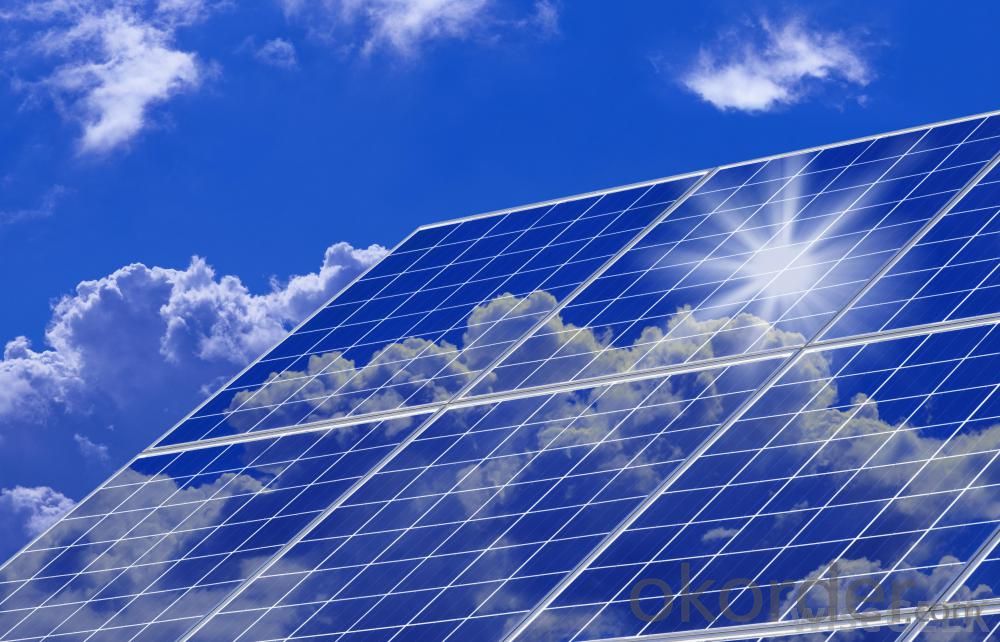
Shipping of Small Poly Solar Panel 35~85w
By Sea | Delivery from Shanghai or Ningbo seaport |
By Air | Departure from Shanghai Pudong Airport |
By Express | Post by DHL, EMS, UPS, TNT. |
Features of our products:
• High conversion efficiency mono/poly-crystalline amorphous silicon solar cells
• Modules incorporate high performance bypass diodes to minimize the power drop caused by shading
• High transmittance, low-iron tempered glass
• High performance EVA encapsulant to prevent destroying and water.
• AI frame: without screw, corner connection. 8 holes on the frame can be installed easily
• Good performance of preventing from atrocious weather such as wind and hails
• Certifications: CE IEC TUV VDE UL, Class I
• 10 years 90% power output warranty
As a professional Solar Panel manufacturer and Supplier in China, we have our customers come around the whole world and our specialization has got a worldwide recognition. Meanwhile, with our superior quality, competitive price, prompt and excellent service, As main role in trade section of CNBM Group, CNBM International Corporation supplies products including Monocrystalline Solar Panel, Polycrystalline Solar Panel ( multicrystalline silicon Solar Panel) have received and enjoyed famous reputation in many countries and regions in the world.
- Q: Can a solar energy system be installed on a building with a slate roof?
- Yes, a solar energy system can be installed on a building with a slate roof. The installation process may require extra care and expertise to ensure the integrity of the roof is maintained during the installation. It is recommended to consult with professionals who have experience in installing solar panels on slate roofs to ensure a proper and safe installation.
- Q: Can solar energy systems be used for powering remote cabins or cottages?
- Yes, solar energy systems can be effectively used for powering remote cabins or cottages. Since these locations are typically situated far away from utility power grids, solar panels can harness sunlight and convert it into usable electricity to meet the energy needs of these off-grid properties. With advancements in solar technology, it is now possible to design systems that can generate enough power to run appliances, lighting, heating, and other electrical devices in remote cabins or cottages. Additionally, energy storage solutions like batteries can be integrated into the system to ensure a constant power supply even during periods of low sunlight.
- Q: Can a solar energy system be installed in an area with a high fire risk?
- Yes, a solar energy system can be installed in an area with a high fire risk. However, extra precautions and safety measures need to be taken to minimize the risk of fire, such as using fire-resistant materials, proper spacing between panels, and regular maintenance to prevent debris accumulation.
- Q: Are there any tax credits available for installing a solar energy system?
- Installing a solar energy system grants access to tax credits. The federal government provides the Solar Investment Tax Credit (ITC), enabling homeowners and businesses to deduct a portion of the installation cost from their federal taxes. The ITC currently offers a 26% tax credit for systems installed until the end of 2022. However, it is crucial to note that starting in 2023, the tax credit will decrease to 22% and exclusively apply to commercial installations. Moreover, certain states extend their own tax incentives for solar energy systems, such as tax credits, rebates, or exemptions. It is advisable to consult your state or local government to determine the availability of specific tax credits in your area.
- Q: How do solar energy systems impact the structural integrity of a building?
- Solar energy systems do not significantly affect a building's structural integrity. They are specifically engineered to be installed on rooftops or as standalone structures without compromising stability. The weight of solar panels is relatively light, and advancements in technology have made them even lighter. Panels are typically mounted on racks or frames to evenly distribute the weight across the surface area. Additionally, professional engineers assist in the installation of roof-mounted solar panels to ensure the load is properly distributed and does not exceed the roof's weight-bearing capacity. Furthermore, solar panels act as a protective layer for the roof, shielding it from direct sunlight, rain, and other weather conditions. This protection extends the roof's lifespan by preventing UV damage and reducing thermal stress caused by extreme temperatures. In certain cases, additional reinforcement may be necessary, particularly for older buildings or areas prone to seismic activity or heavy snow loads. However, experienced professionals consider these factors during the installation process. Overall, solar energy systems have an insignificant impact on a building's structural integrity and can even enhance roof protection. They are designed to be secure, dependable, and long-lasting, promoting the stability and sustainability of the building.
- Q: Can solar energy systems be used in powering research farms or agricultural laboratories?
- Yes, solar energy systems can certainly be used to power research farms or agricultural laboratories. Solar energy is a clean and renewable source of power that can be harnessed through the installation of solar panels. These panels convert sunlight into electricity, which can then be used to power various equipment and facilities. Research farms and agricultural laboratories often require a significant amount of electricity to operate, including lighting, heating, cooling, and powering agricultural machinery. By utilizing solar energy systems, these facilities can reduce their reliance on fossil fuels and decrease their carbon footprint. Solar energy systems can be installed on the roofs of buildings or on open land near the research farm or laboratory. The amount of solar energy generated will depend on factors such as the location of the facility, the size of the solar panels, and the amount of sunlight received. However, with advancements in solar technology, even areas with limited sunlight can still benefit from solar energy systems. In addition to being environmentally friendly, solar energy systems can also provide long-term cost savings for research farms and agricultural laboratories. Once installed, solar panels have a lifespan of 25-30 years, requiring minimal maintenance. This can lead to significant savings on electricity bills, especially in rural areas where grid connectivity may be unreliable or expensive. Furthermore, solar energy systems can provide a reliable source of power, especially during periods of peak demand or power outages. By incorporating battery storage systems, excess energy generated during the day can be stored and used during the night or cloudy days, ensuring a continuous power supply for research activities. Overall, solar energy systems are a viable and sustainable solution for powering research farms and agricultural laboratories. They offer numerous benefits, including reduced environmental impact, long-term cost savings, and reliable power supply. As the demand for renewable energy continues to grow, integrating solar energy systems into agricultural facilities can contribute to a greener and more sustainable future.
- Q: How do solar energy systems impact the carbon footprint of a home?
- Solar energy systems have a significant positive impact on reducing the carbon footprint of a home. By harnessing the power of the sun to generate electricity, solar energy systems produce clean and renewable energy, resulting in a significant reduction in greenhouse gas emissions. Conventional electricity generation relies heavily on fossil fuels such as coal, oil, and natural gas, which release carbon dioxide and other harmful pollutants into the atmosphere. These emissions contribute to global warming and air pollution, leading to adverse health effects and environmental degradation. In contrast, solar energy systems produce electricity without any emissions or air pollution. The photovoltaic cells in solar panels convert sunlight into electricity directly, without the need for combustion or any harmful byproducts. As a result, solar energy systems eliminate greenhouse gas emissions and reduce the reliance on fossil fuels. By utilizing solar power, homeowners can significantly decrease their carbon footprint. The amount of carbon dioxide emissions avoided depends on the size and efficiency of the solar energy system, as well as the amount of electricity consumed. However, on average, a typical residential solar energy system can offset approximately 15,000 pounds of carbon dioxide emissions per year. This is equivalent to planting around 150 trees annually or driving a car for 10,000 miles. Moreover, solar energy systems can help homeowners achieve energy independence and reduce their reliance on the electrical grid. By generating their own clean electricity, homeowners can reduce the demand for fossil fuel-based energy sources, further reducing carbon emissions on a larger scale. In summary, solar energy systems have a transformative impact on the carbon footprint of a home. They offer a sustainable and environmentally friendly alternative to conventional electricity generation, reducing greenhouse gas emissions and mitigating climate change. Installing solar panels not only helps homeowners save money on electricity bills but also contributes to a cleaner and healthier planet for future generations.
- Q: Are there any advancements in solar energy system technology?
- Yes, there have been significant advancements in solar energy system technology. These include improvements in solar panel efficiency, the development of new materials for panels, the integration of storage solutions for better energy management, and advancements in solar tracking systems. Additionally, there have been innovations in solar energy system design, such as the use of floating solar farms and the integration of solar technology into building materials. These advancements are making solar energy more accessible, affordable, and efficient, contributing to its increasing adoption worldwide.
- Q: Can solar energy systems be used in multi-story buildings?
- Yes, solar energy systems can be used in multi-story buildings. Solar panels can be installed on rooftops or facades of these buildings to generate clean and renewable energy. The energy produced can be used to power various systems within the building, reducing reliance on traditional sources of electricity. Additionally, advancements in solar technology have made it more efficient and cost-effective, making it a viable option for multi-story buildings.
- Q: Can a solar energy system be installed on a residential apartment complex?
- Yes, a solar energy system can be installed on a residential apartment complex. In fact, many apartment complexes have successfully implemented solar panels to generate clean and renewable energy for their residents.
Send your message to us
Solar Energy Systems Llc 85w Small Solar Panels In Stock China Manufacturer
- Loading Port:
- China main port
- Payment Terms:
- TT OR LC
- Min Order Qty:
- 1 watt
- Supply Capability:
- 10000000 watt/month
OKorder Service Pledge
OKorder Financial Service
Similar products
Hot products
Hot Searches
Related keywords
